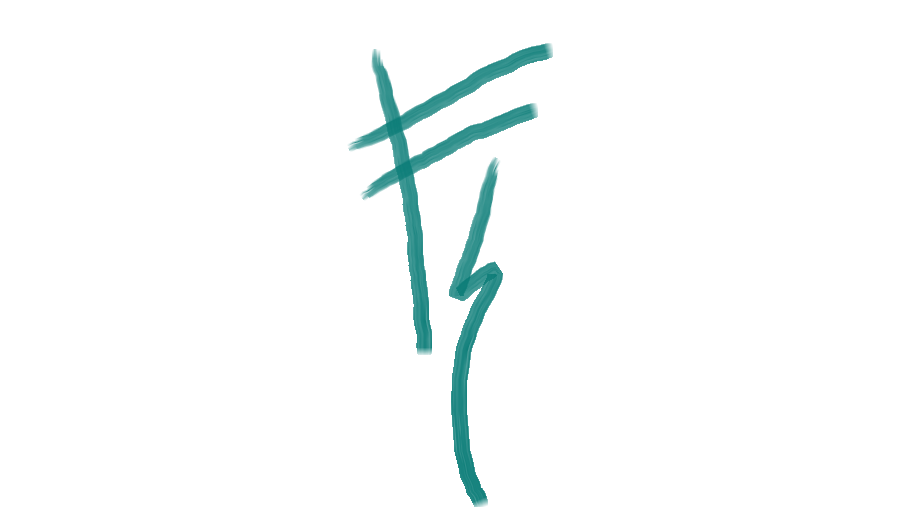This is a piece of Clay taken from just under the waterline of a river (53°26′17″N , 002°08′31″W). The melting along the top is due to minerals being deposited in to the clay. This result from firing is likely to be due a decomposing tree or ash from a fire which took place some time ago.
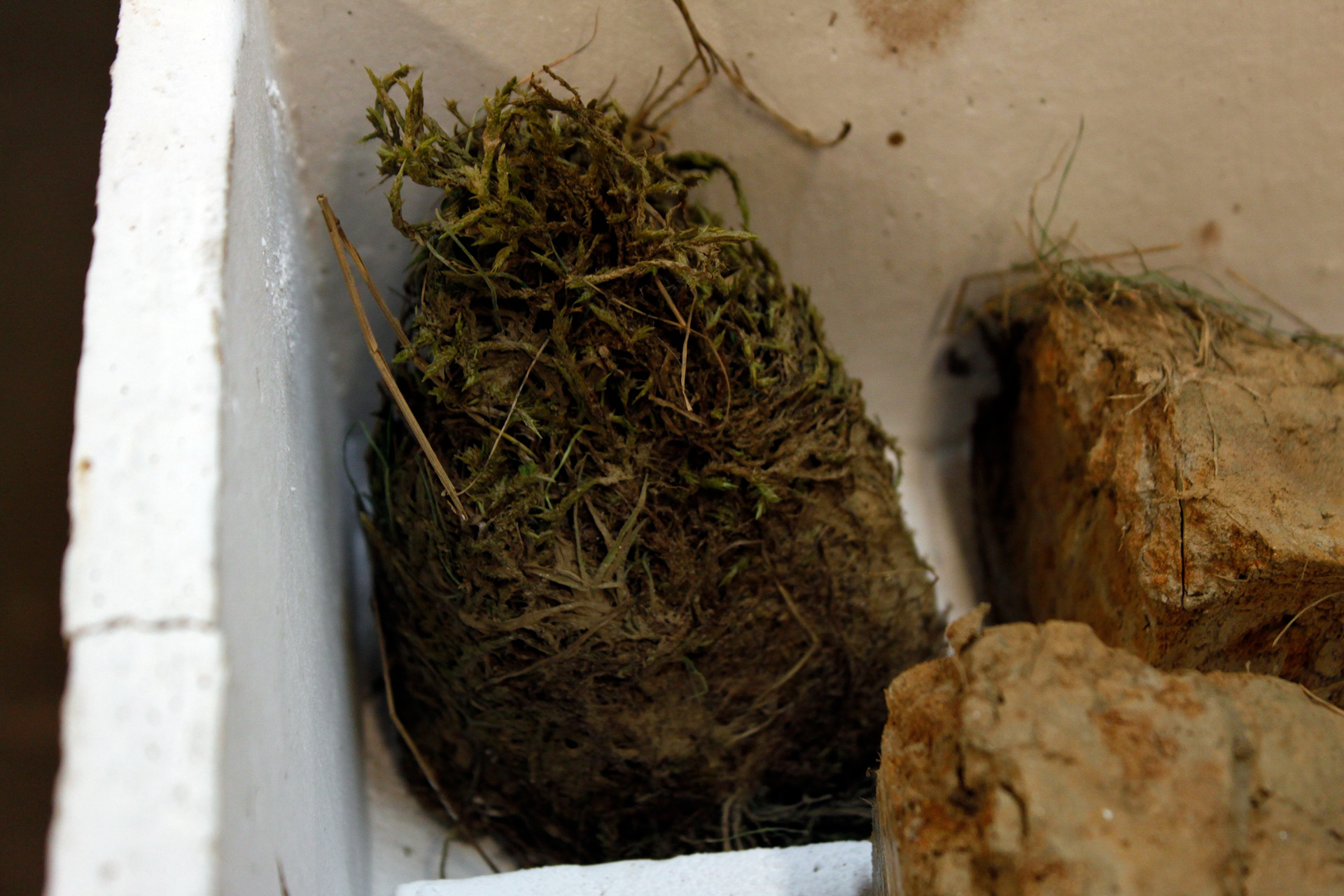
Raw clay from Grindslow clough loaded into a sagger to protect the kiln
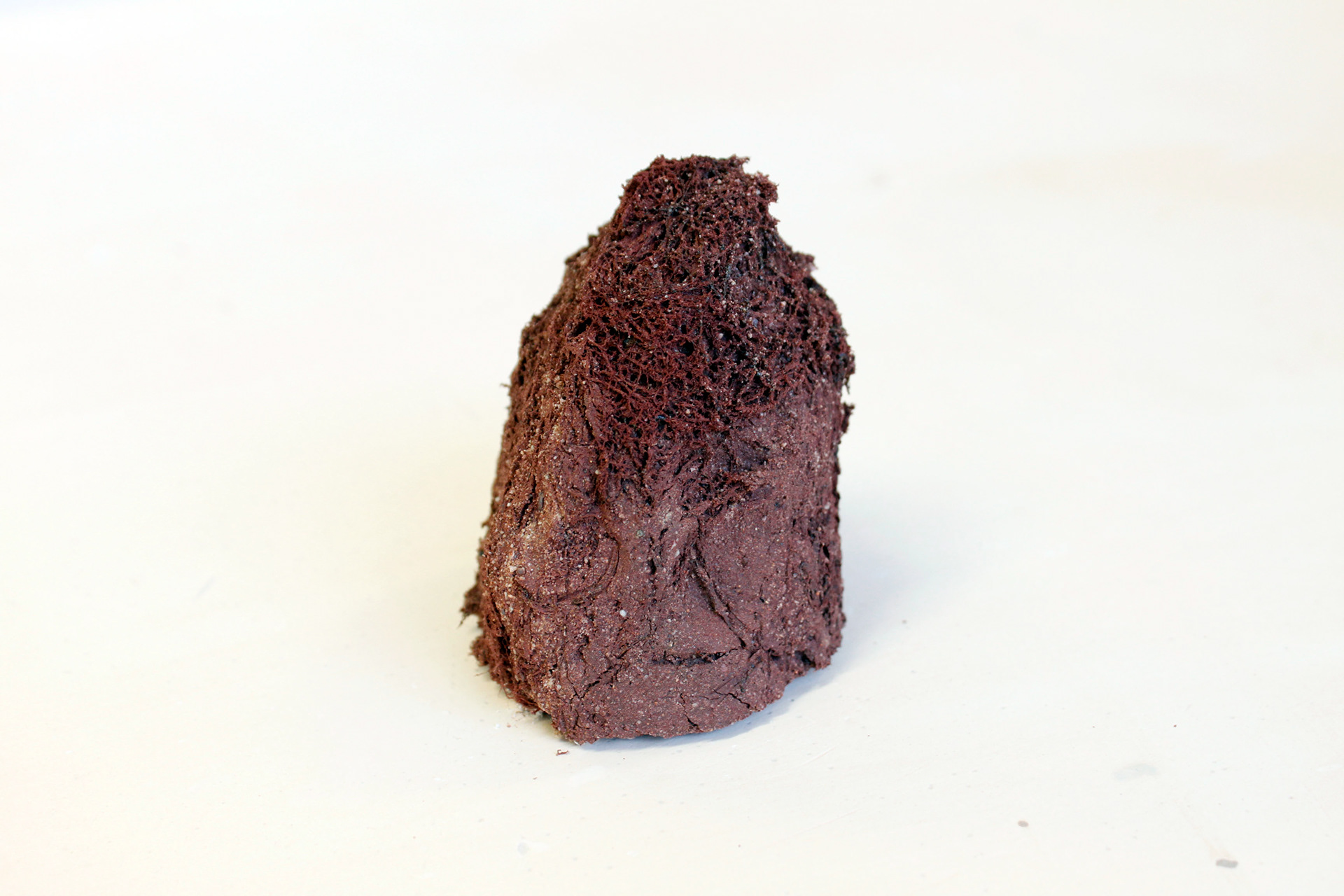
Stoneware sample with a texture created from burning away the attached moss
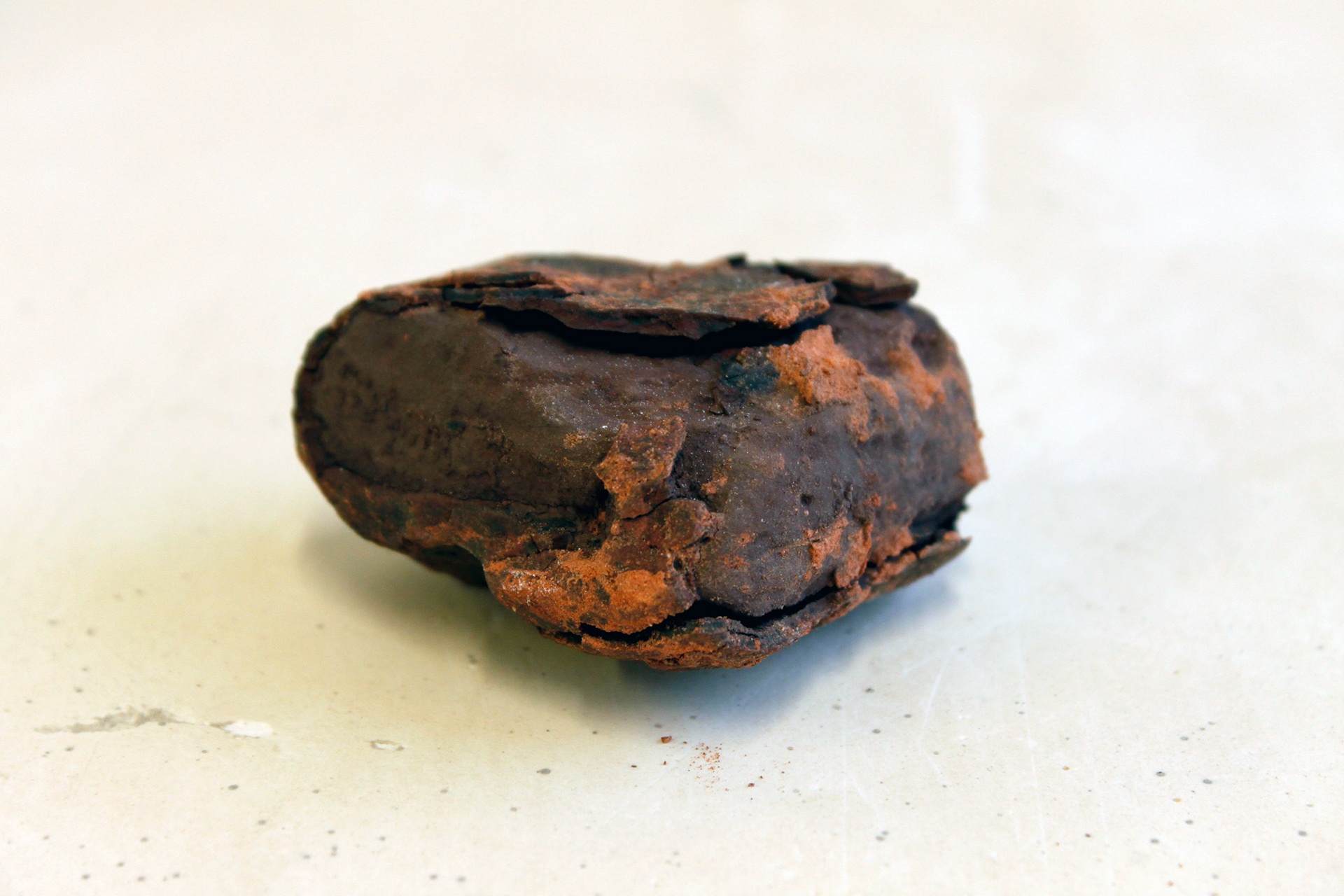
53°21′32″N , 001°49′55″W
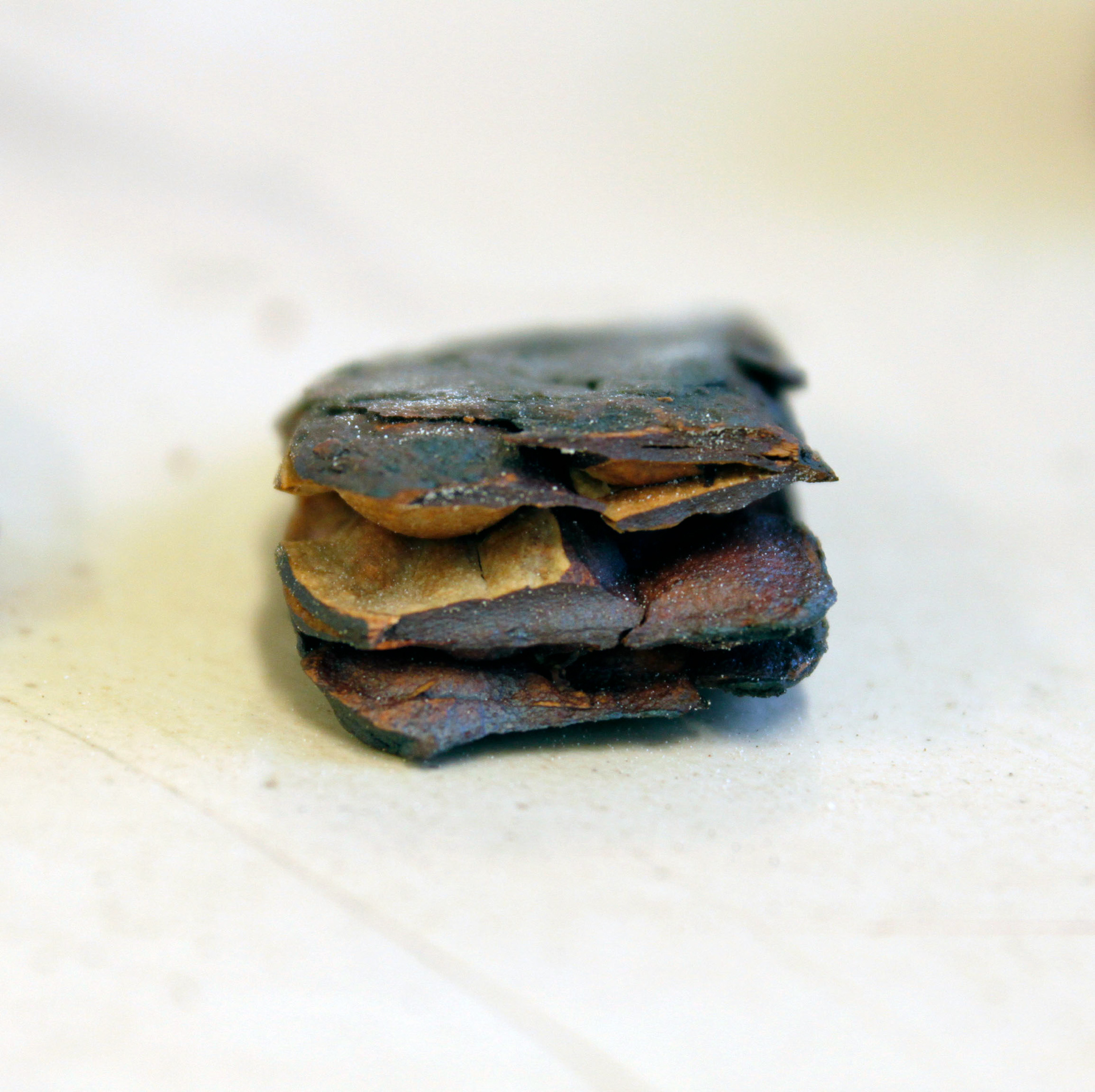
53°21′32″N , 001°49′55″W
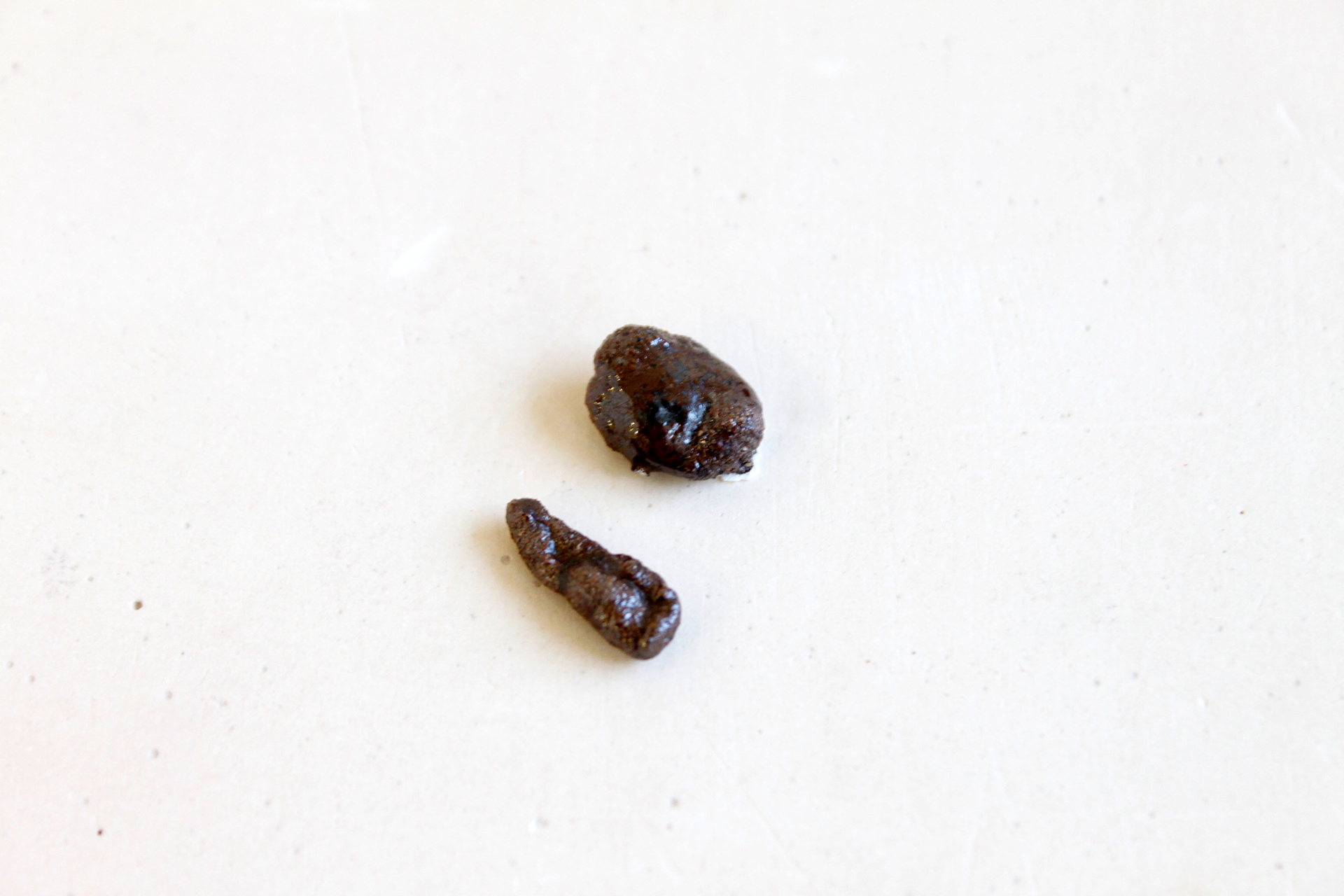
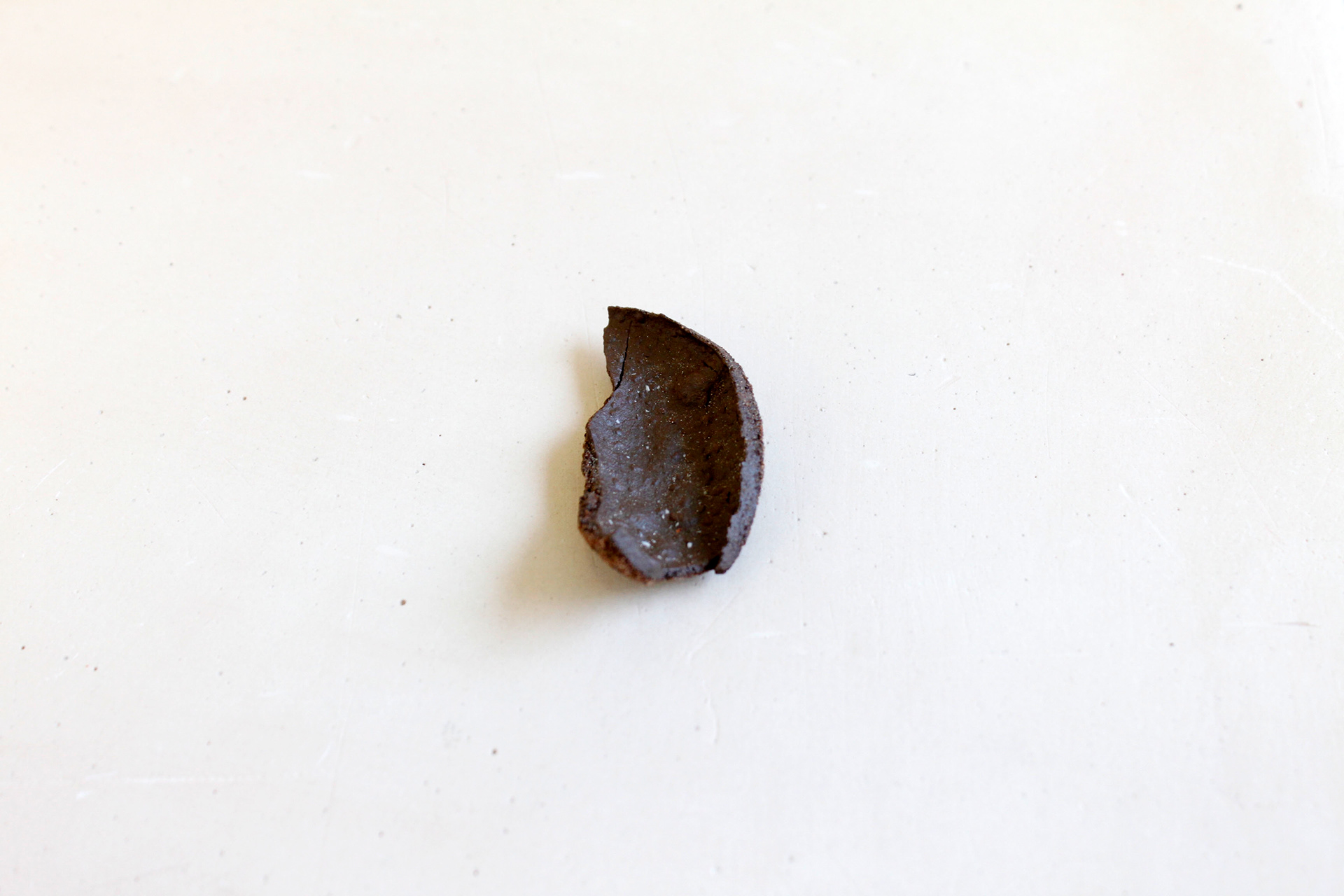
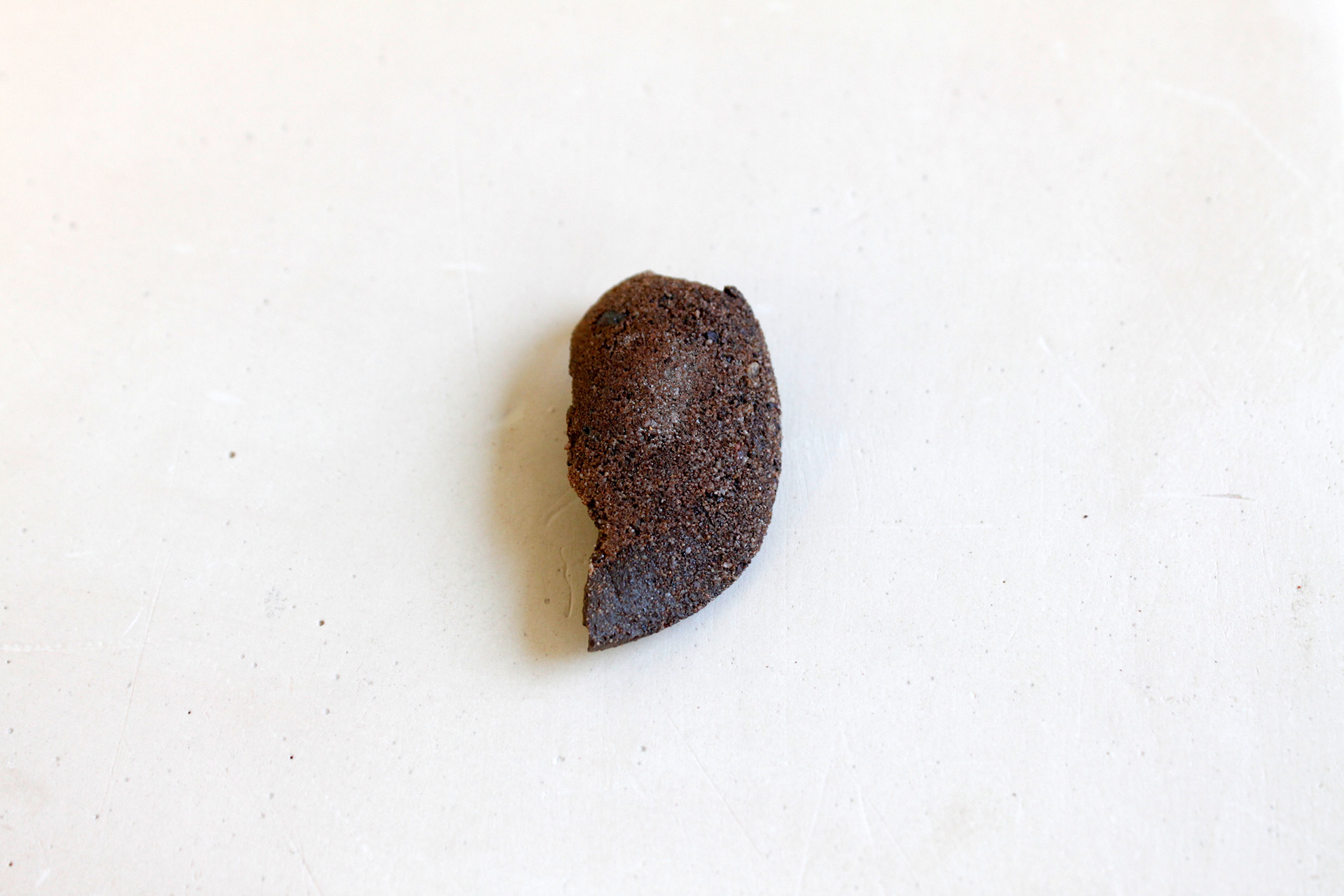
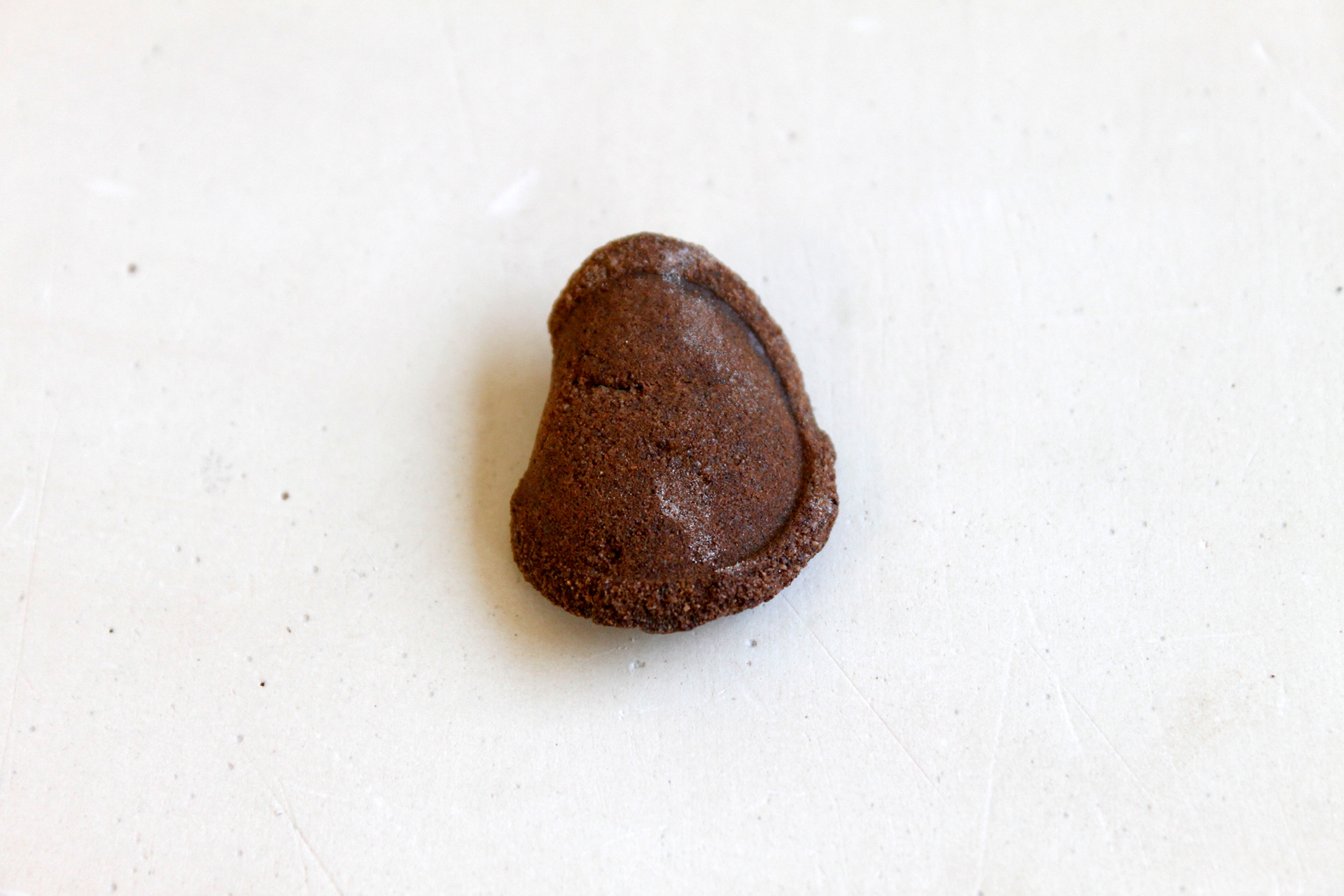
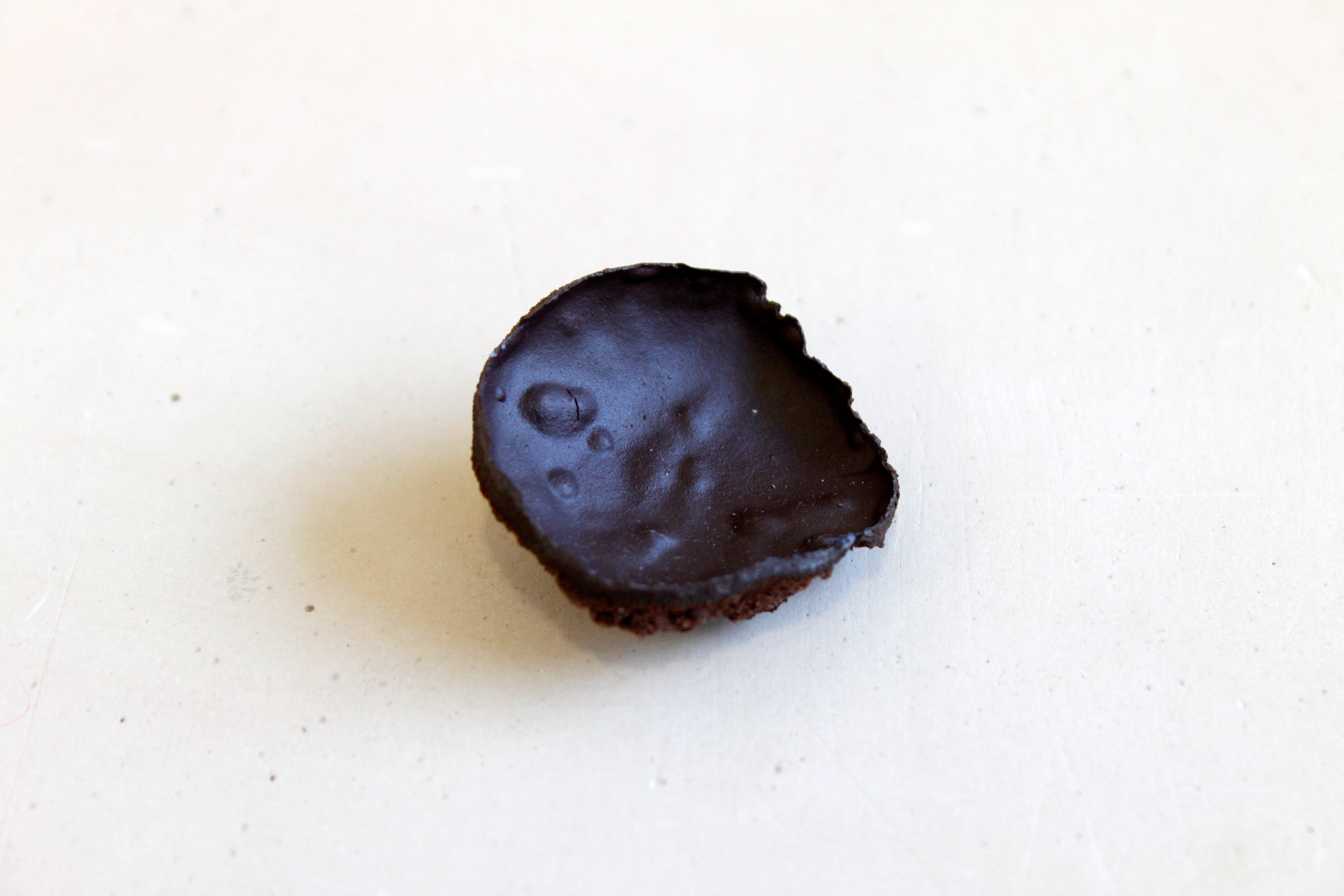
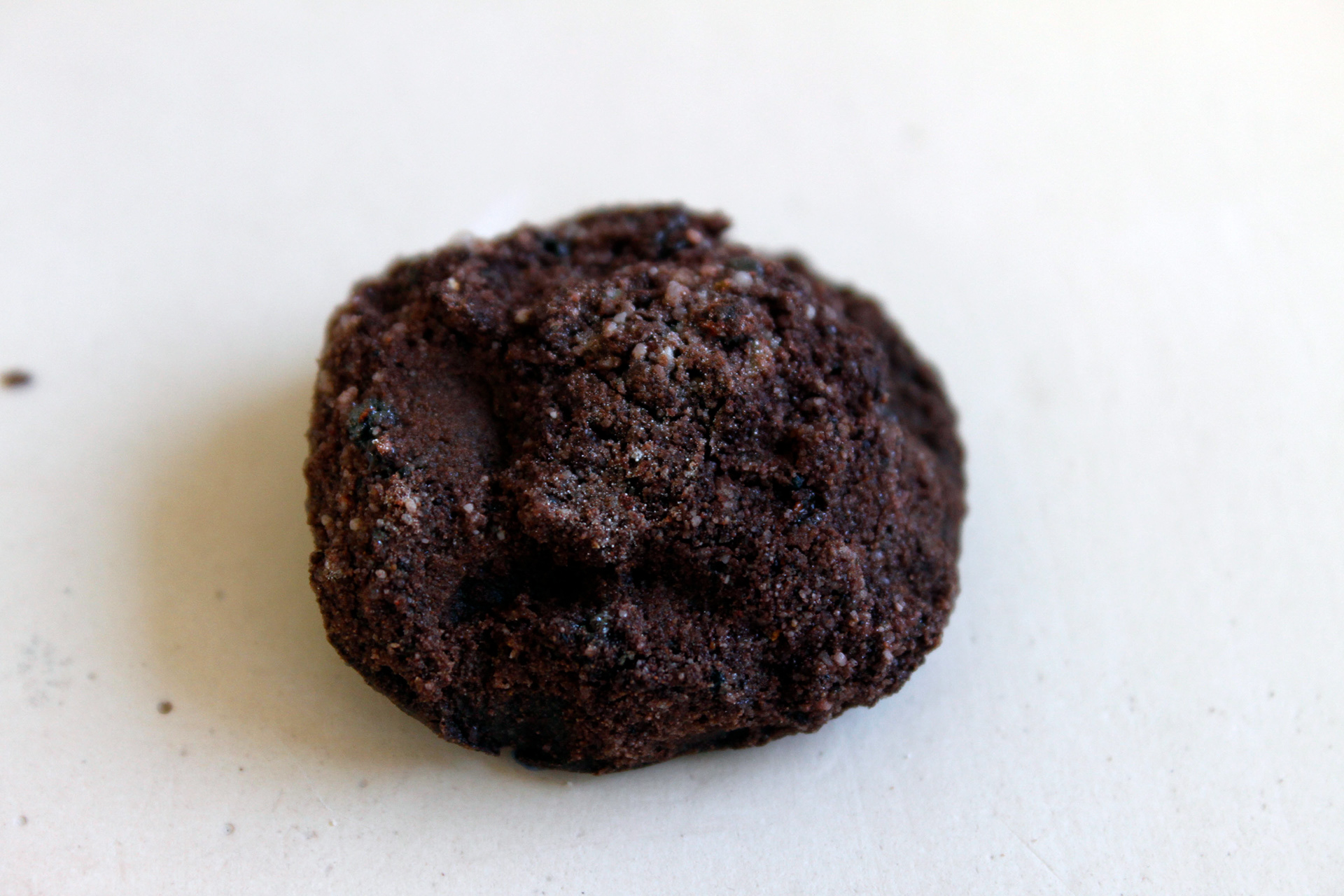
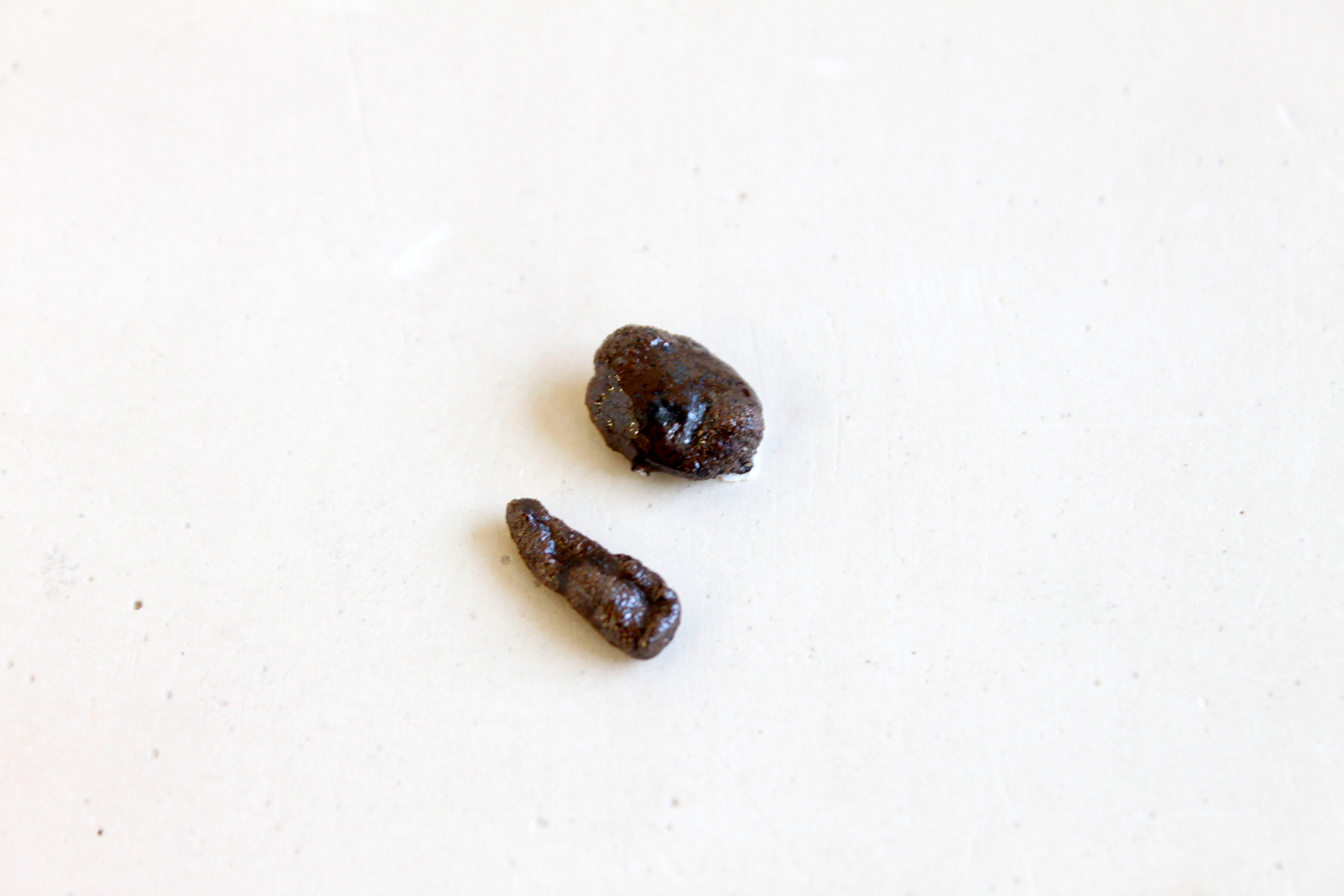
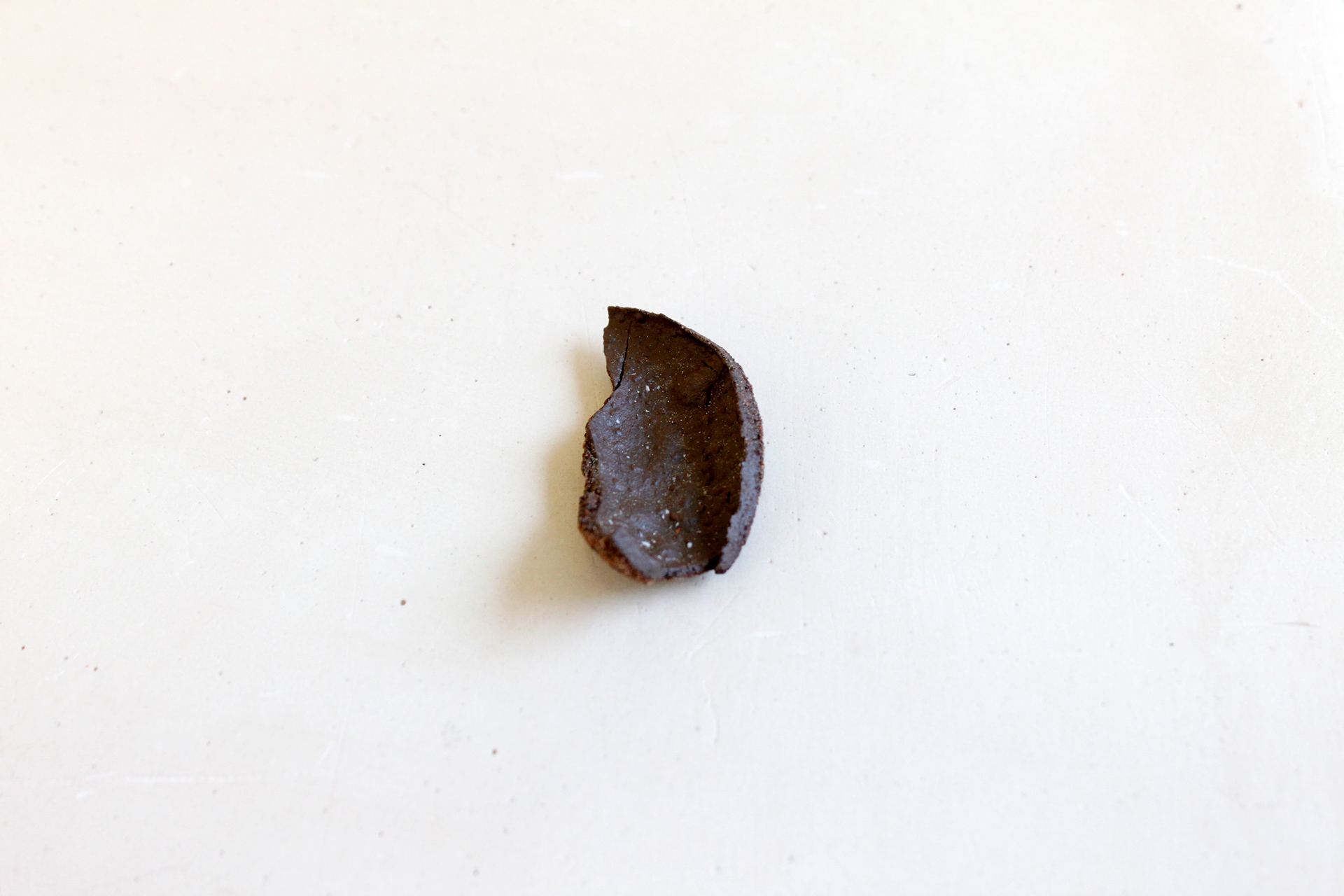
53°21′14″N , 001°50′52″W
This is an example of raw clay turn to slip, allowed to sediment, then fired showing the range materials suspended in raw clay bodies.
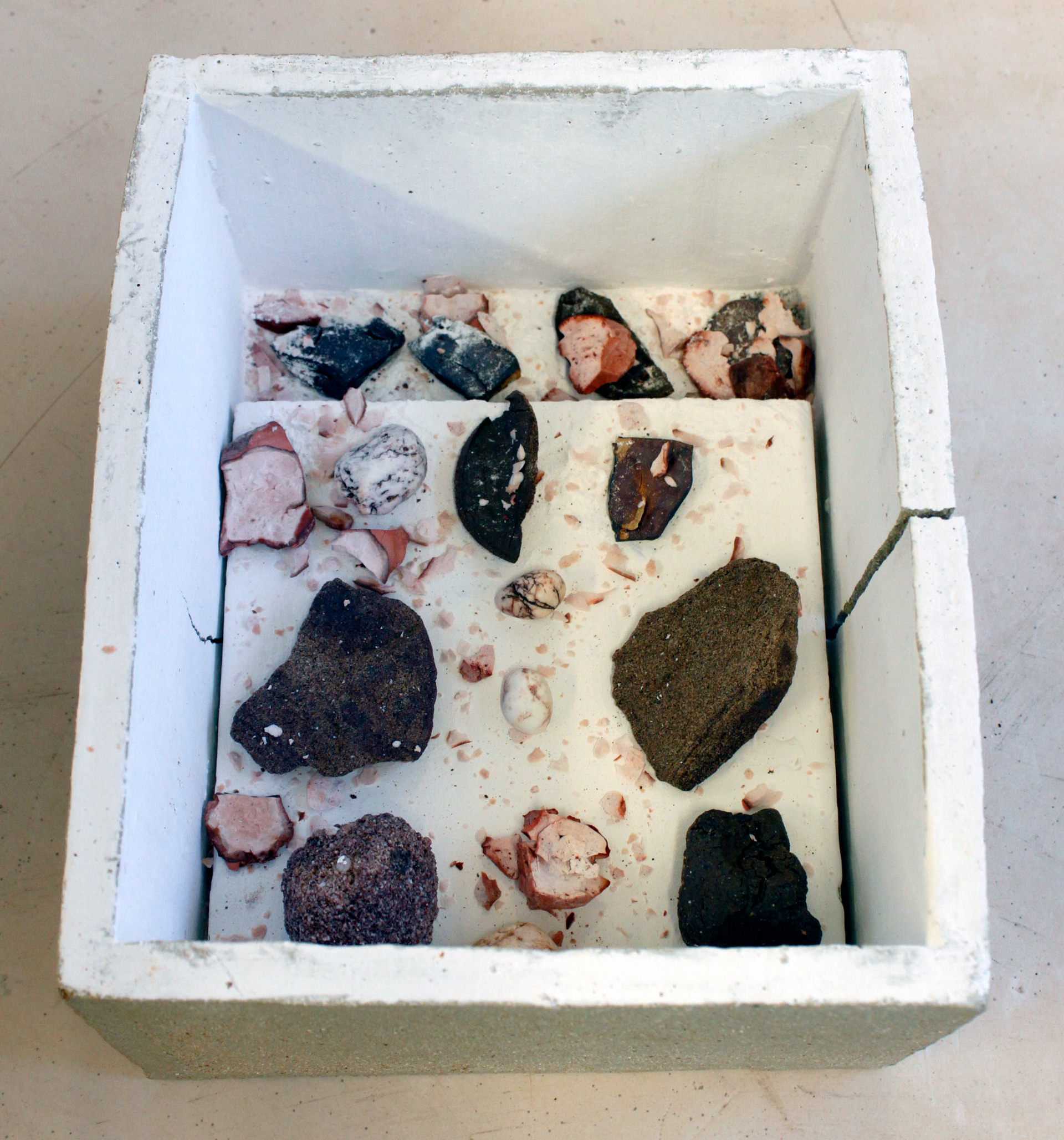
Pieces post firing. Notice the flint that when fired exploded inside the saagar.
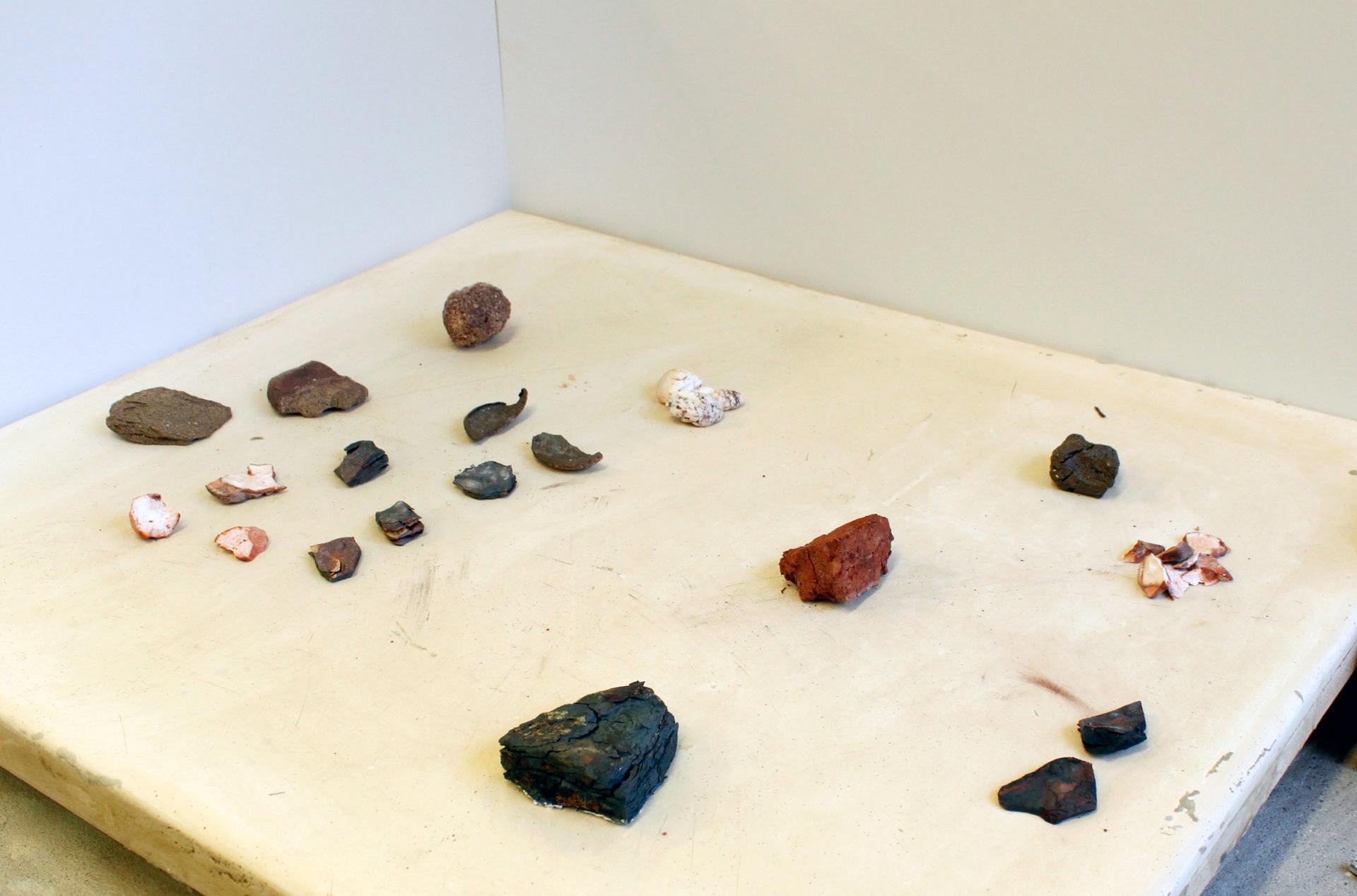
Sorting Pieces post firing.
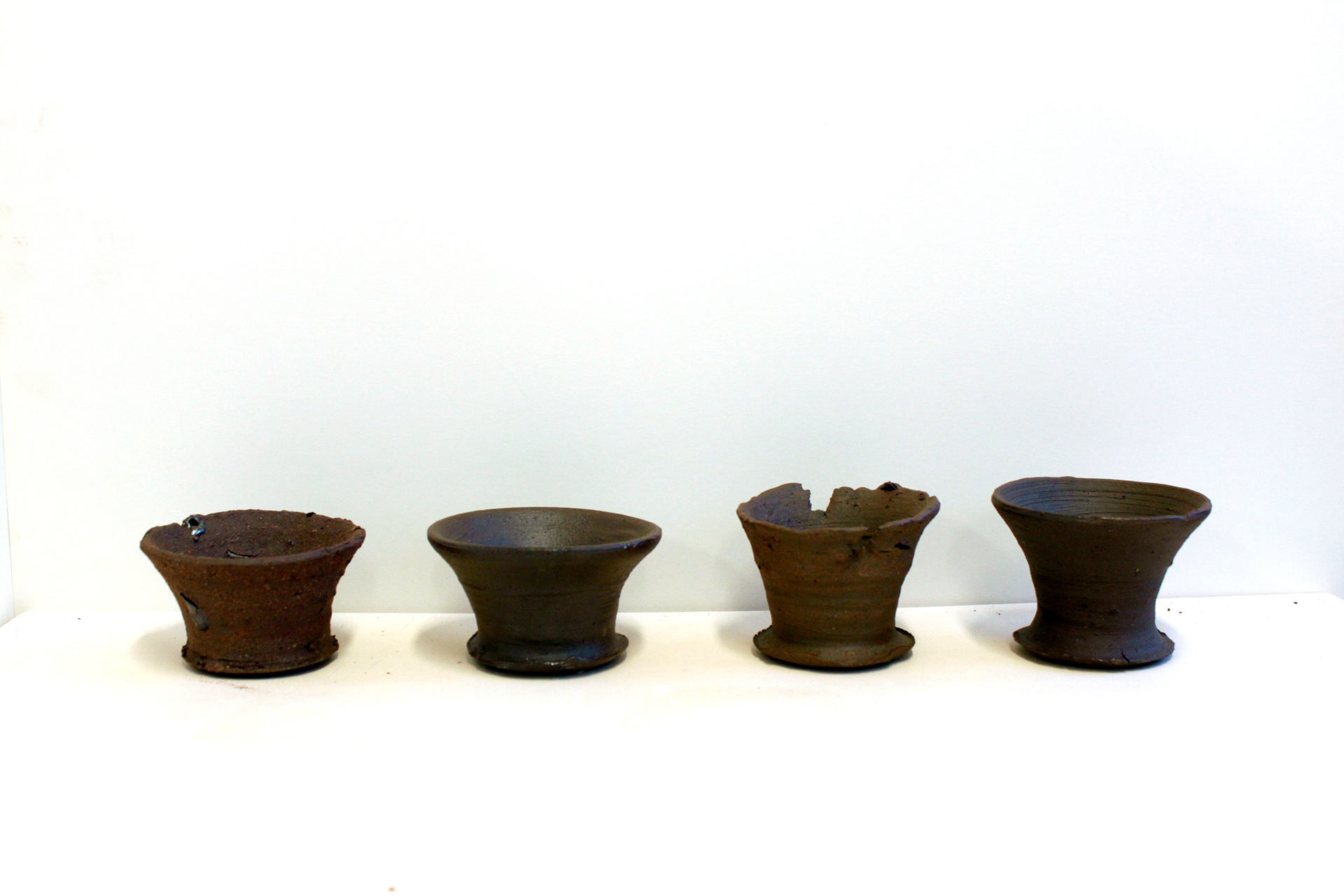
Thrown forms using different clays from different locations
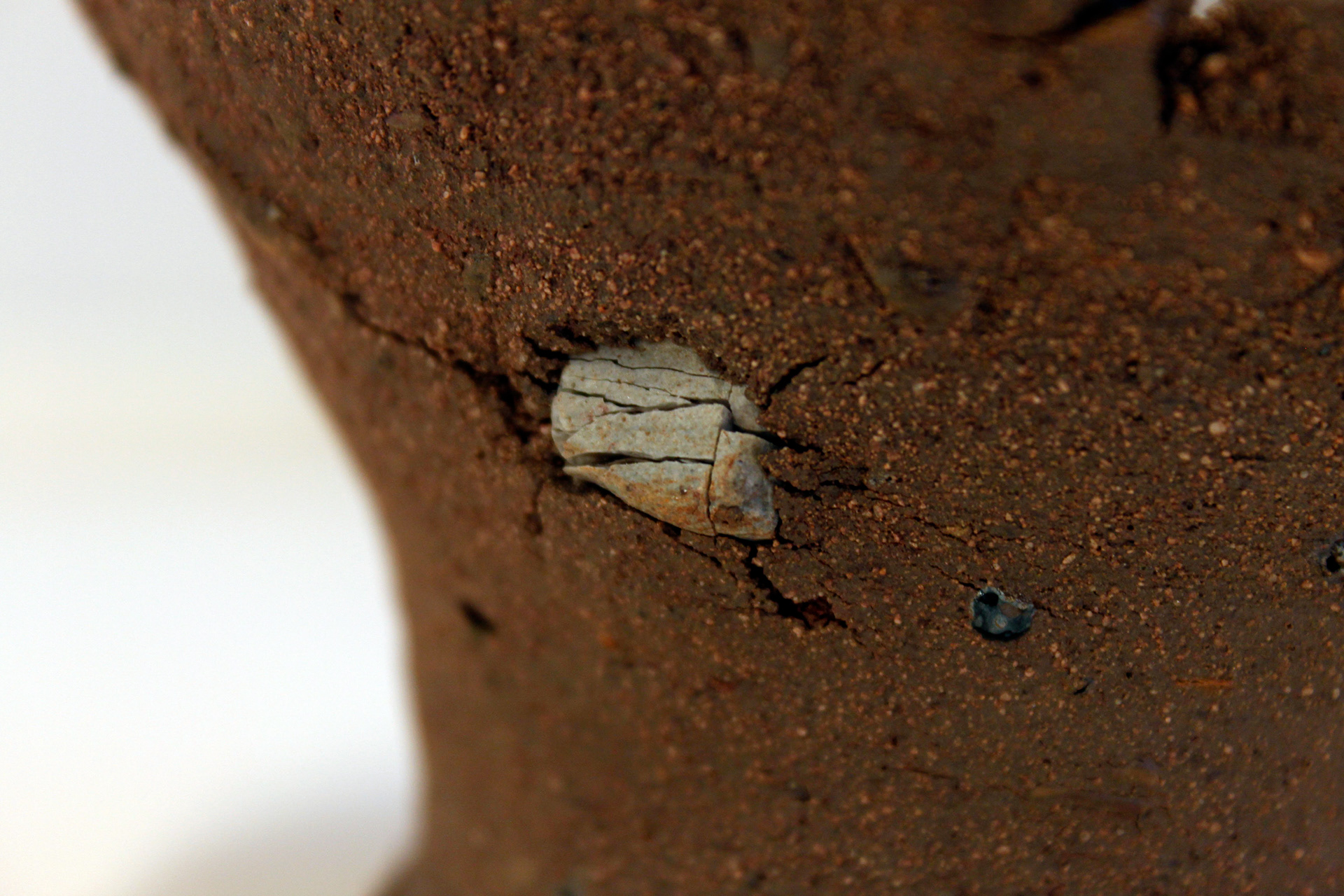
Shattered rock in clay body
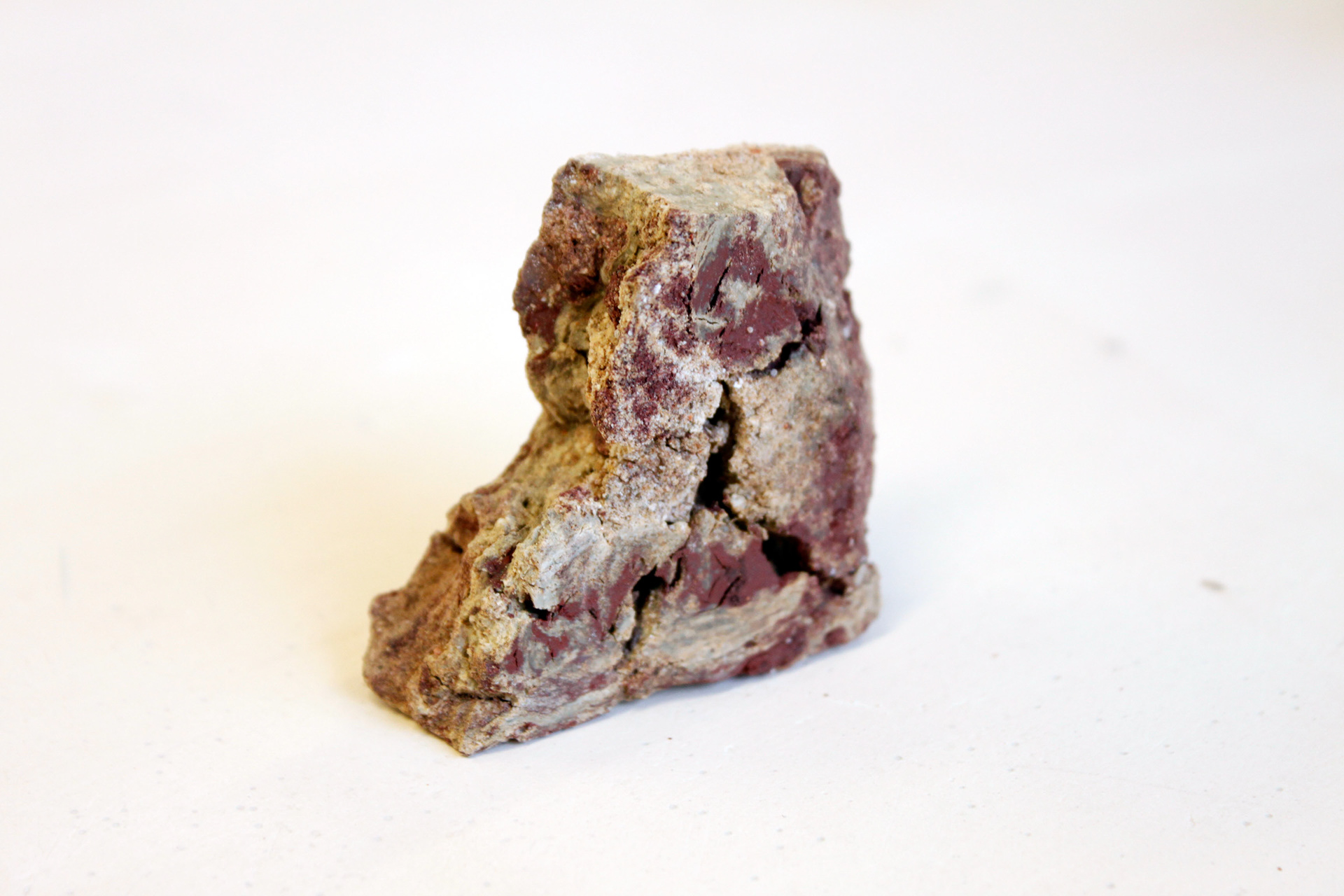
Stoneware sample of naturally mixed clay
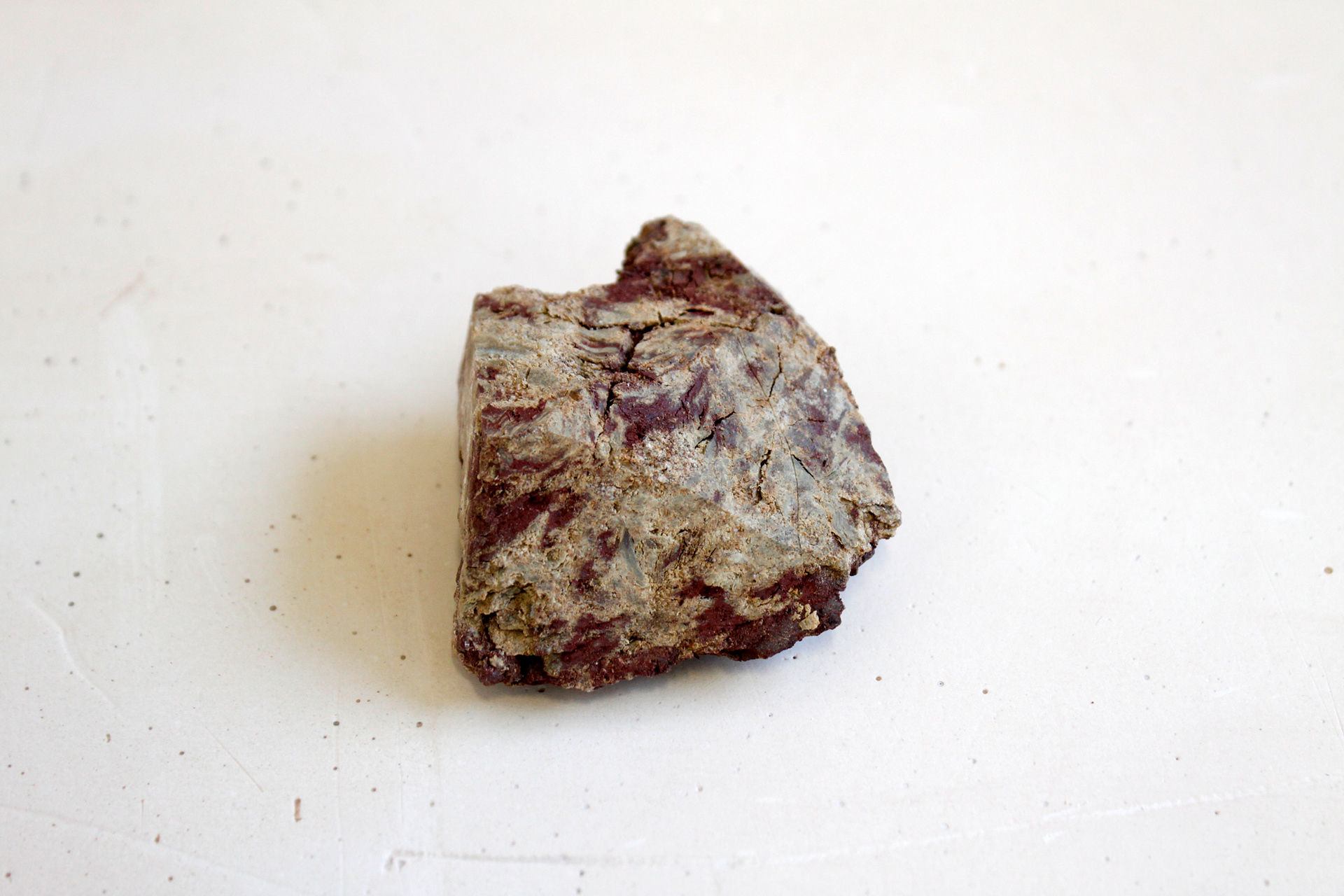
Stoneware sample of naturally mixed clay
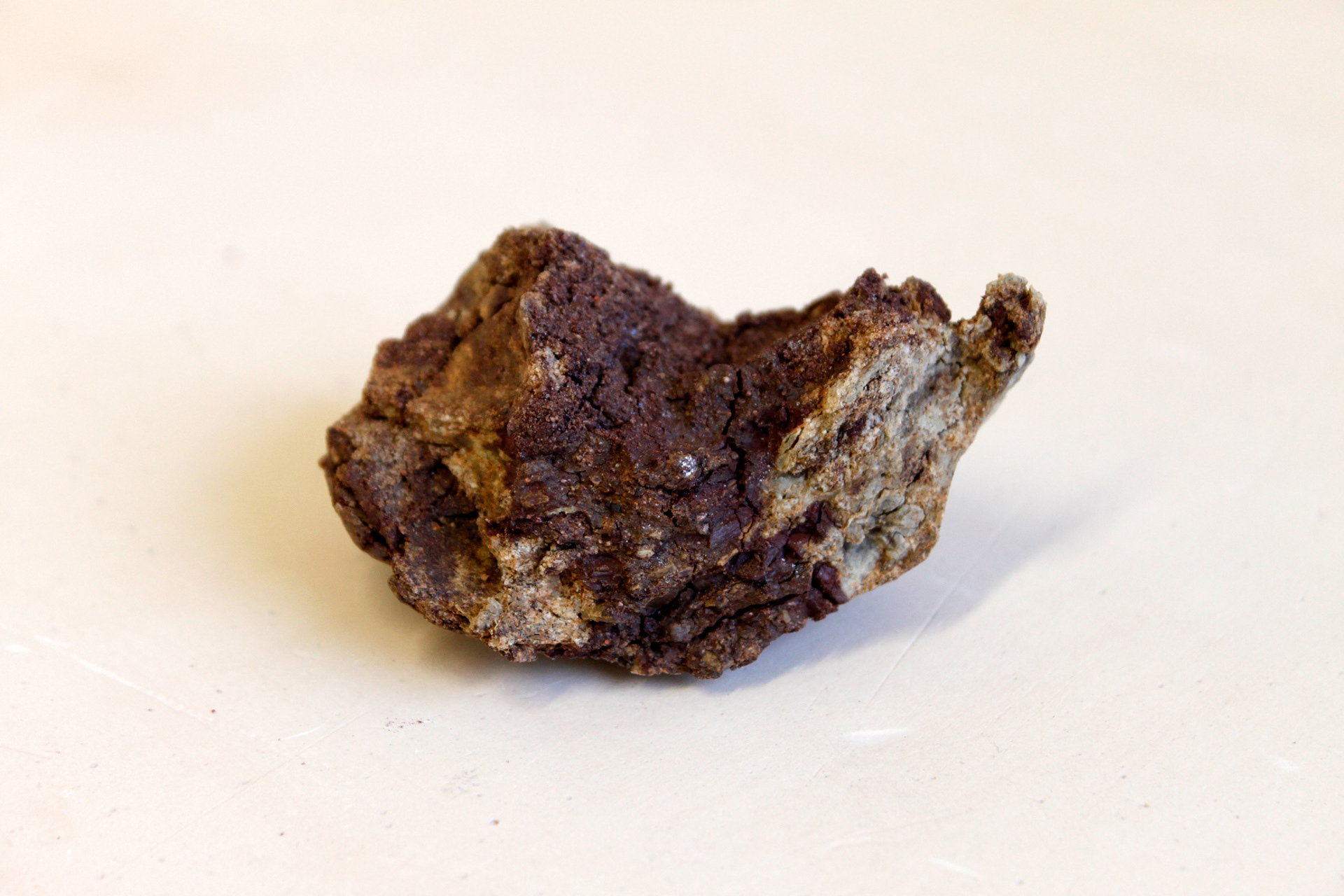
Stoneware sample of naturally mixed clay
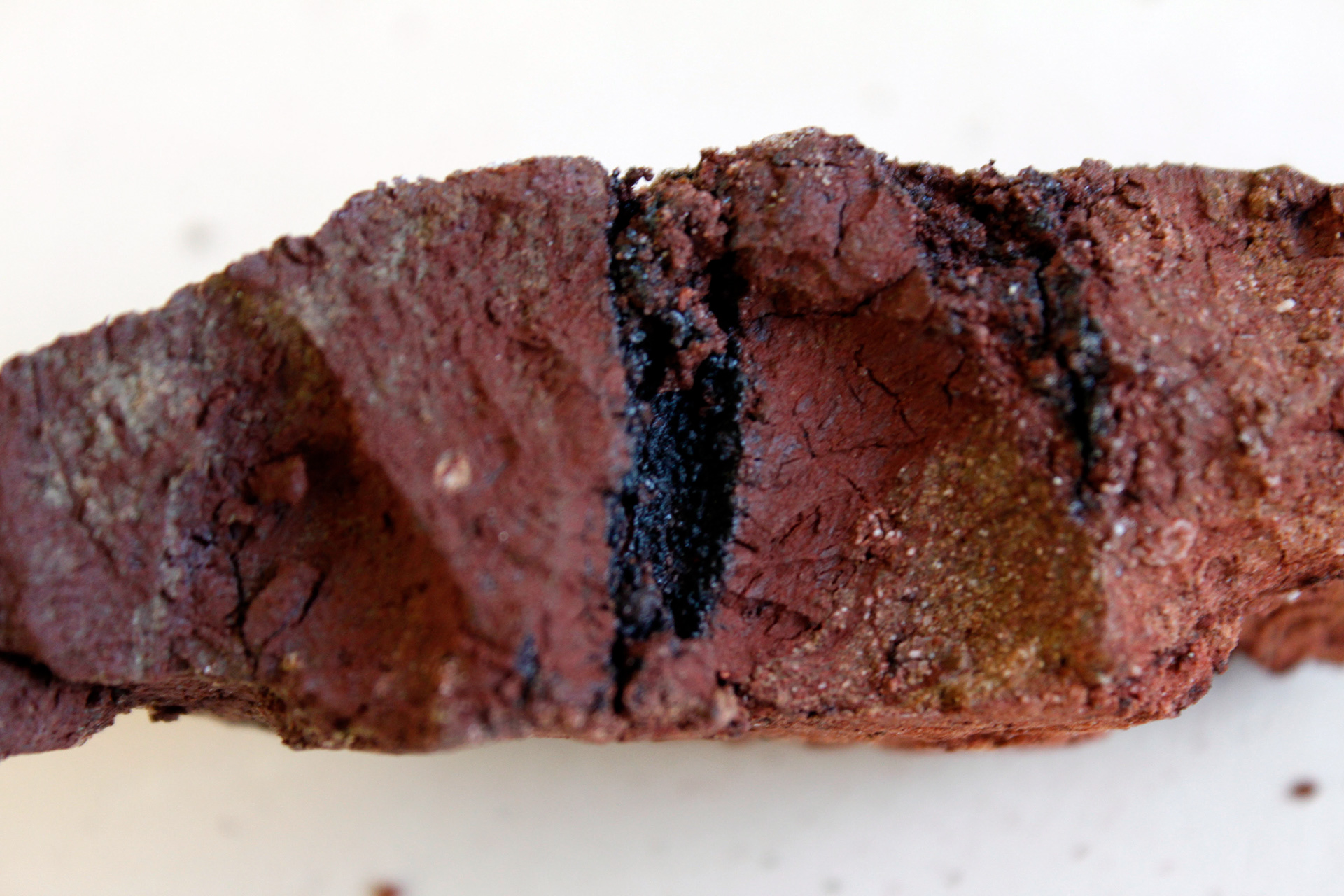
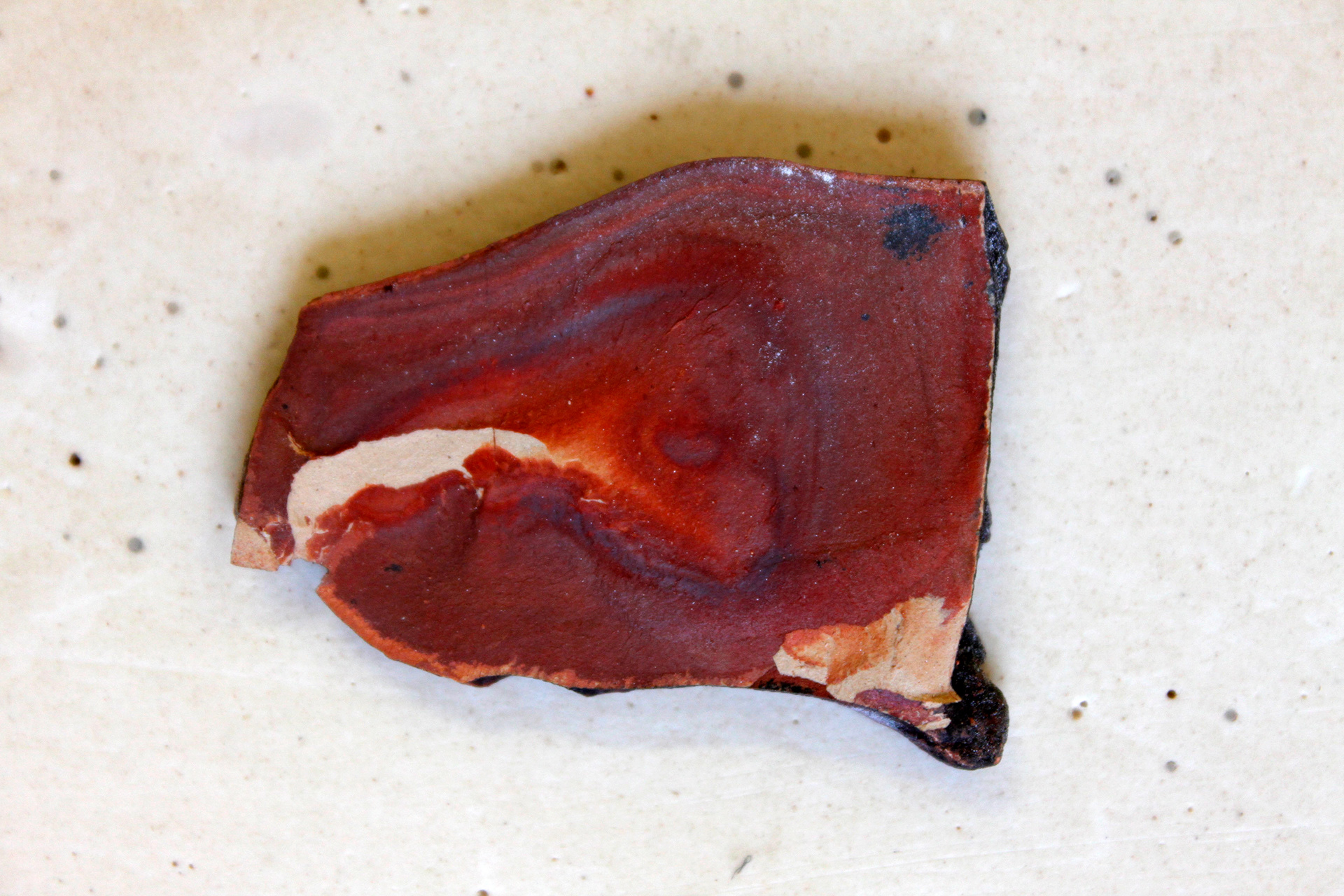
This fired piece of slate is from 53°21′32″N , 001°49′55″W. Slate is formed from compacted clay. The reason for the areas of white is that a layer of pale kaolin like clay was sedimented and compacted into the piece and through the firing process revealed.
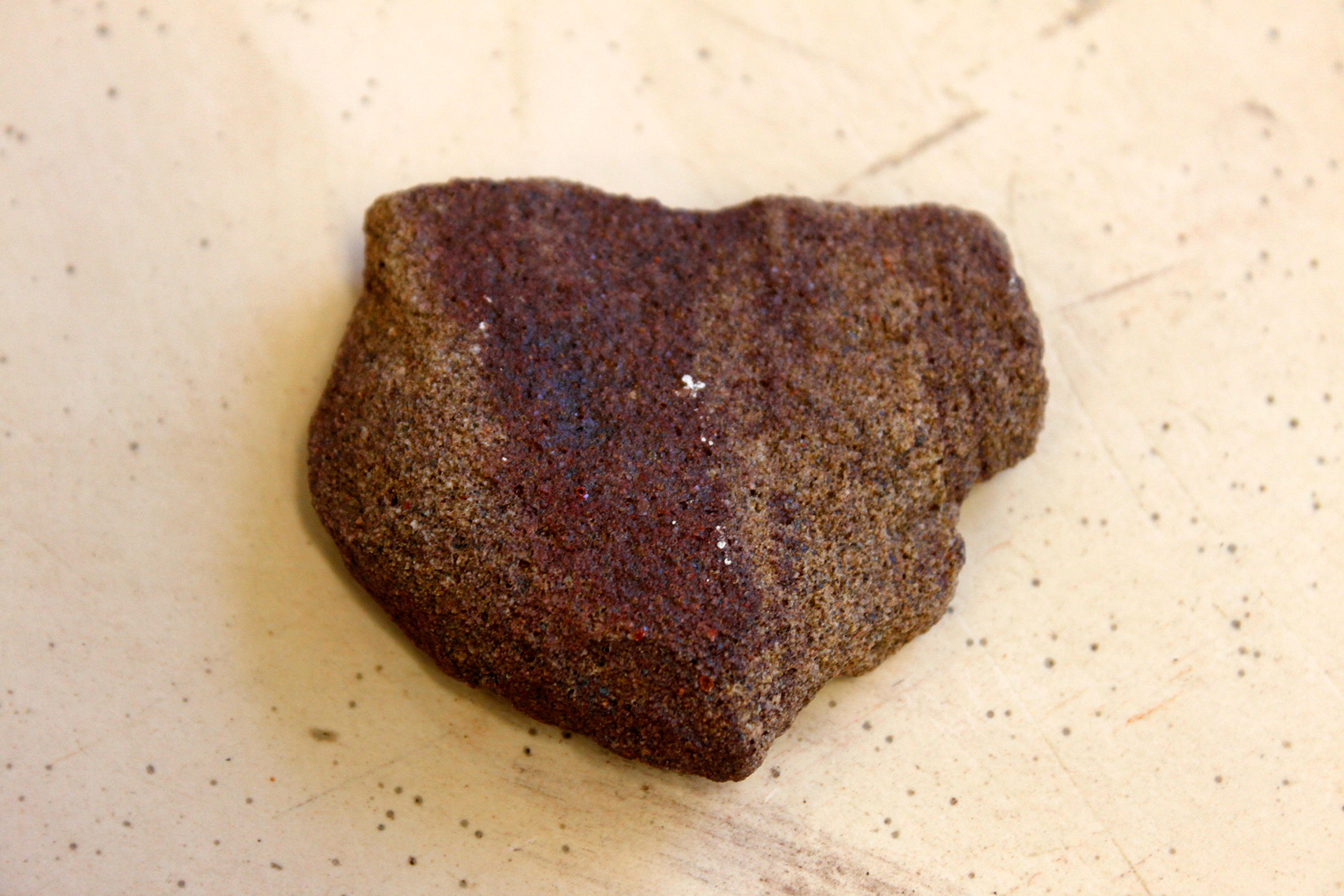
Stoneware fired sandstone
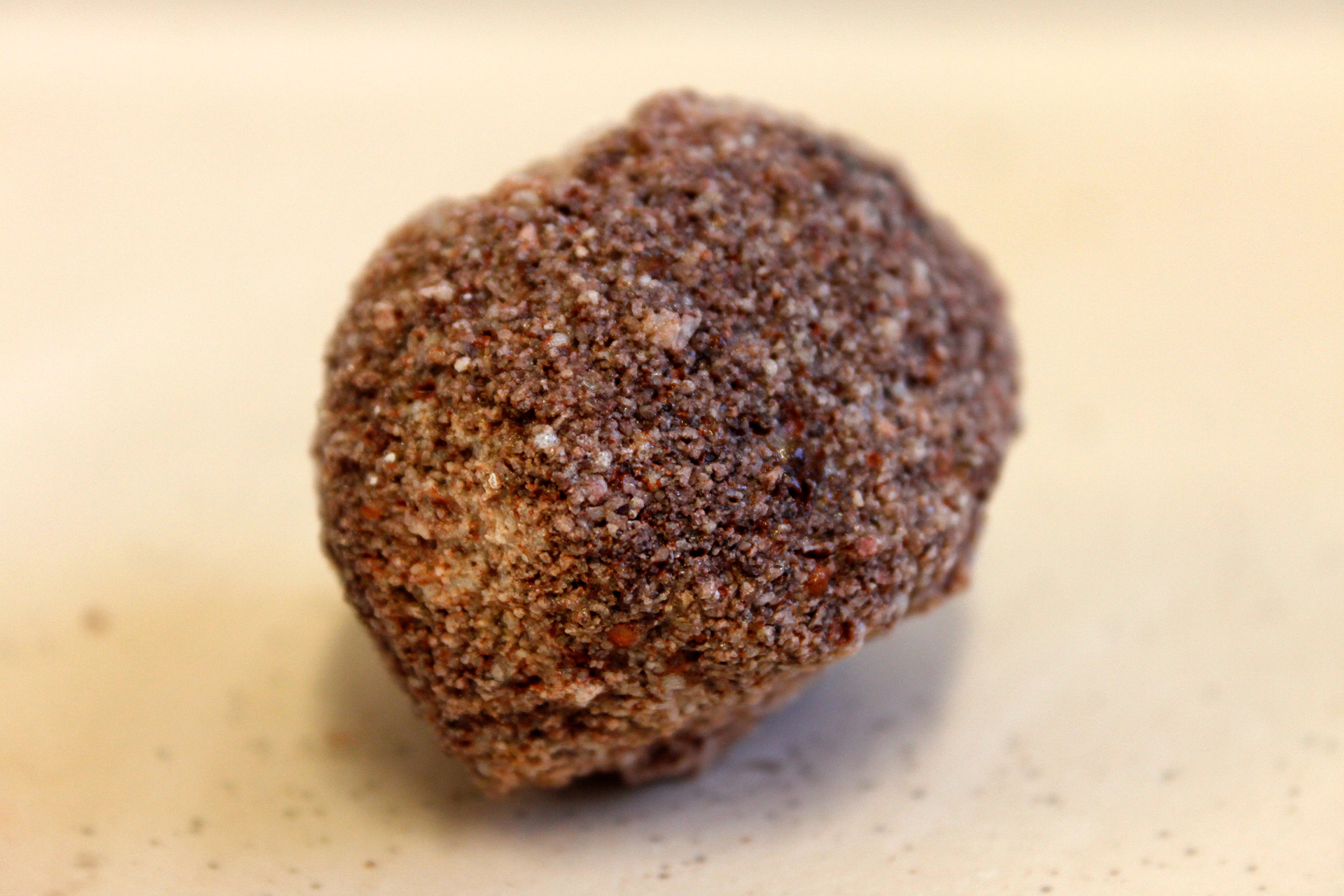
Stoneware fired gritstone
This is from 53°21′32″N , 001°49′55″W.
It is a sample of slate that has been covered with iron oxide giving it a reddish colour and feldspathic quartz where it is a very pale pink.
Raw clay sedimented by the river from 53°26′17″N , 002°08′31″W.
Raw clay from 53°26′01″N , 002°13′46″W fired to Earthenware (Red) and Stoneware (Purple).
The light coloured parts of these samples is sharpsand. , a common building material .This displays the human narrative of building work that has gone on around and involving the clay.
